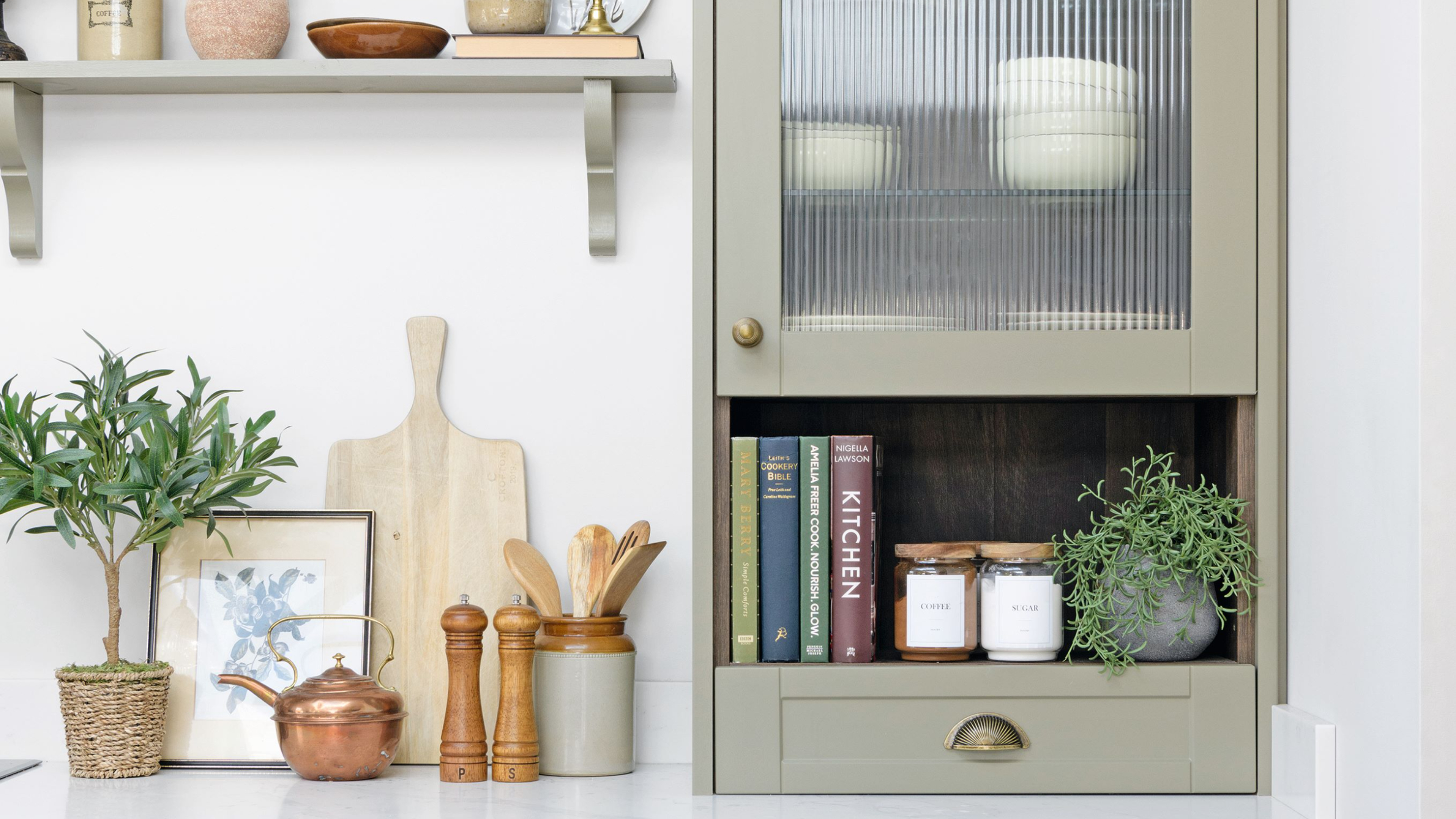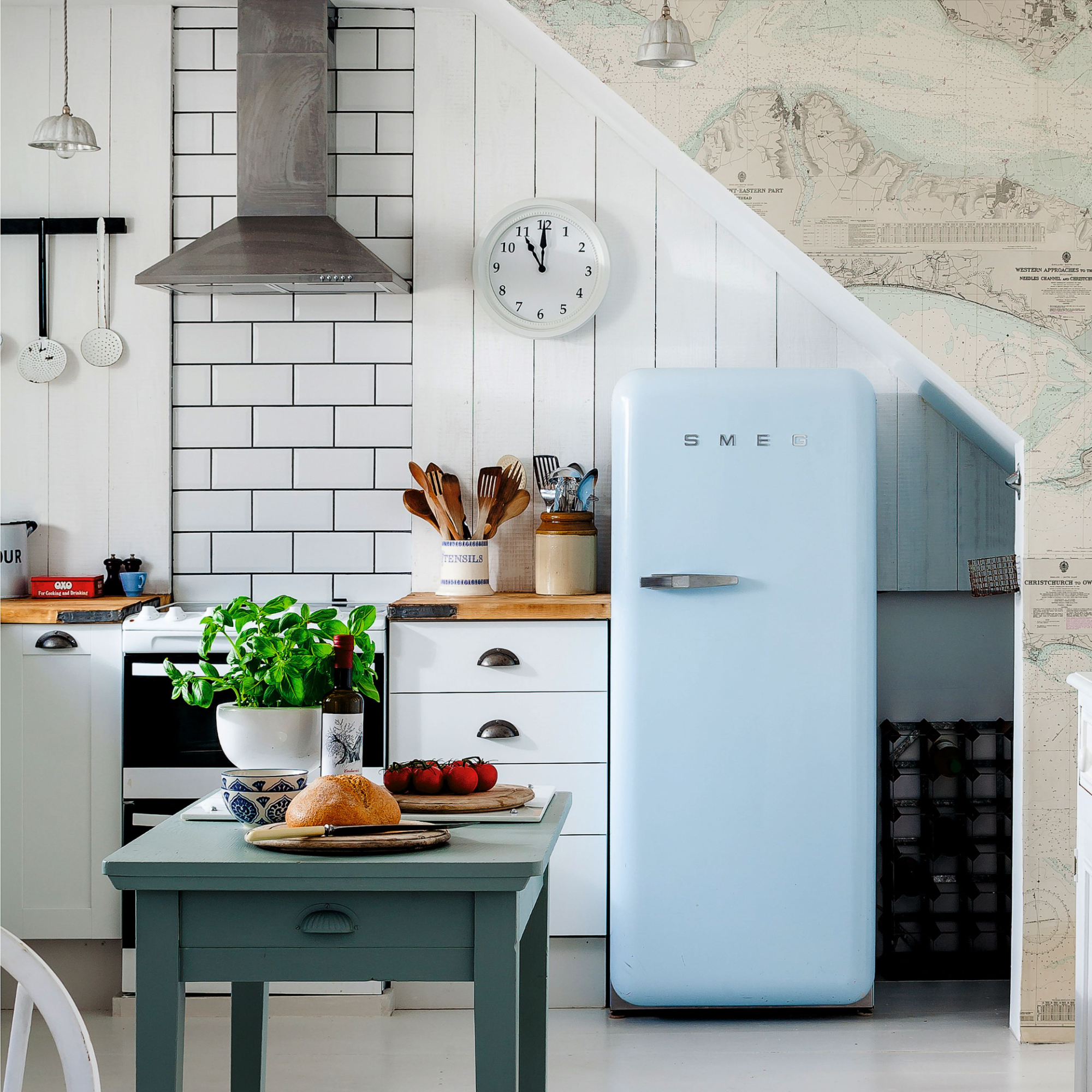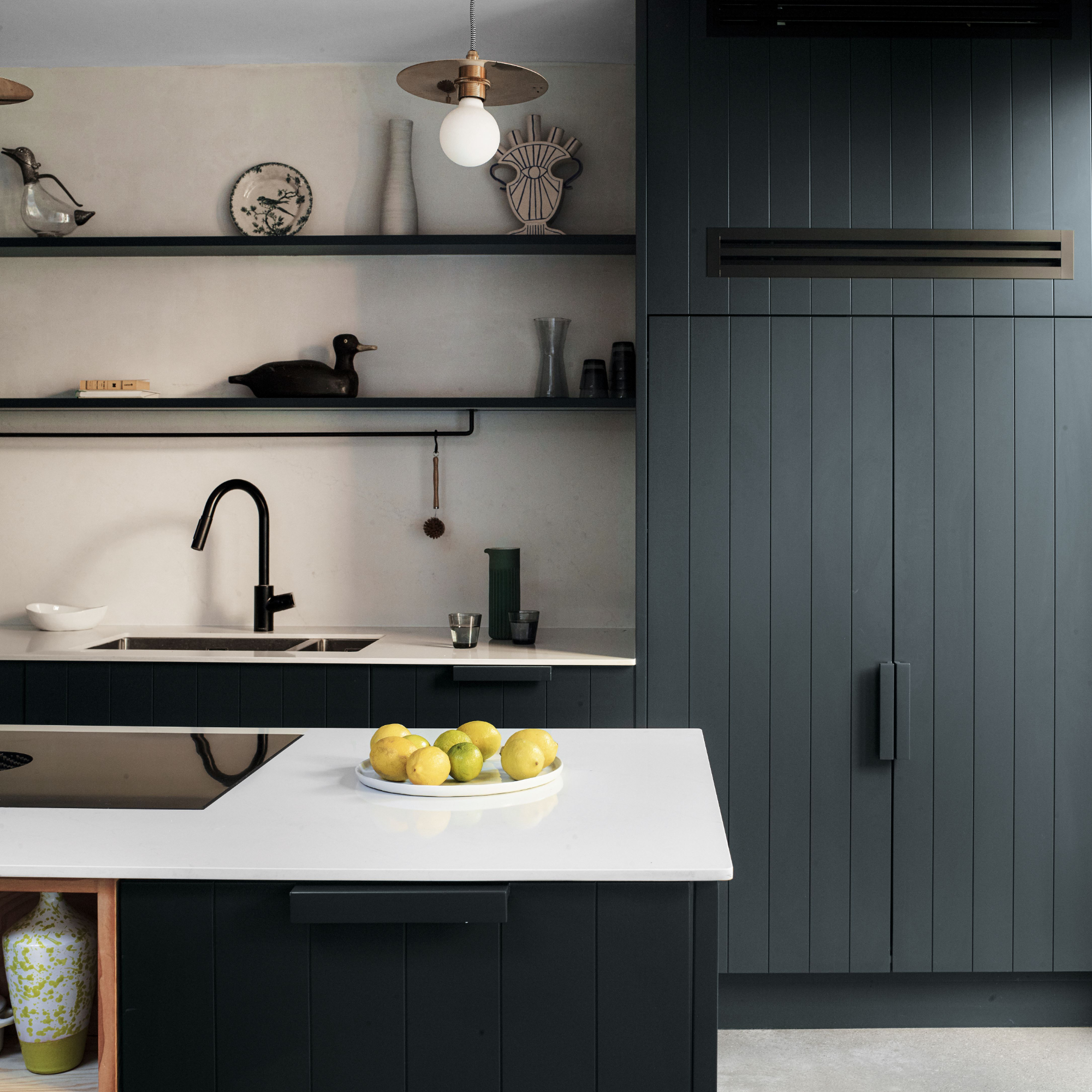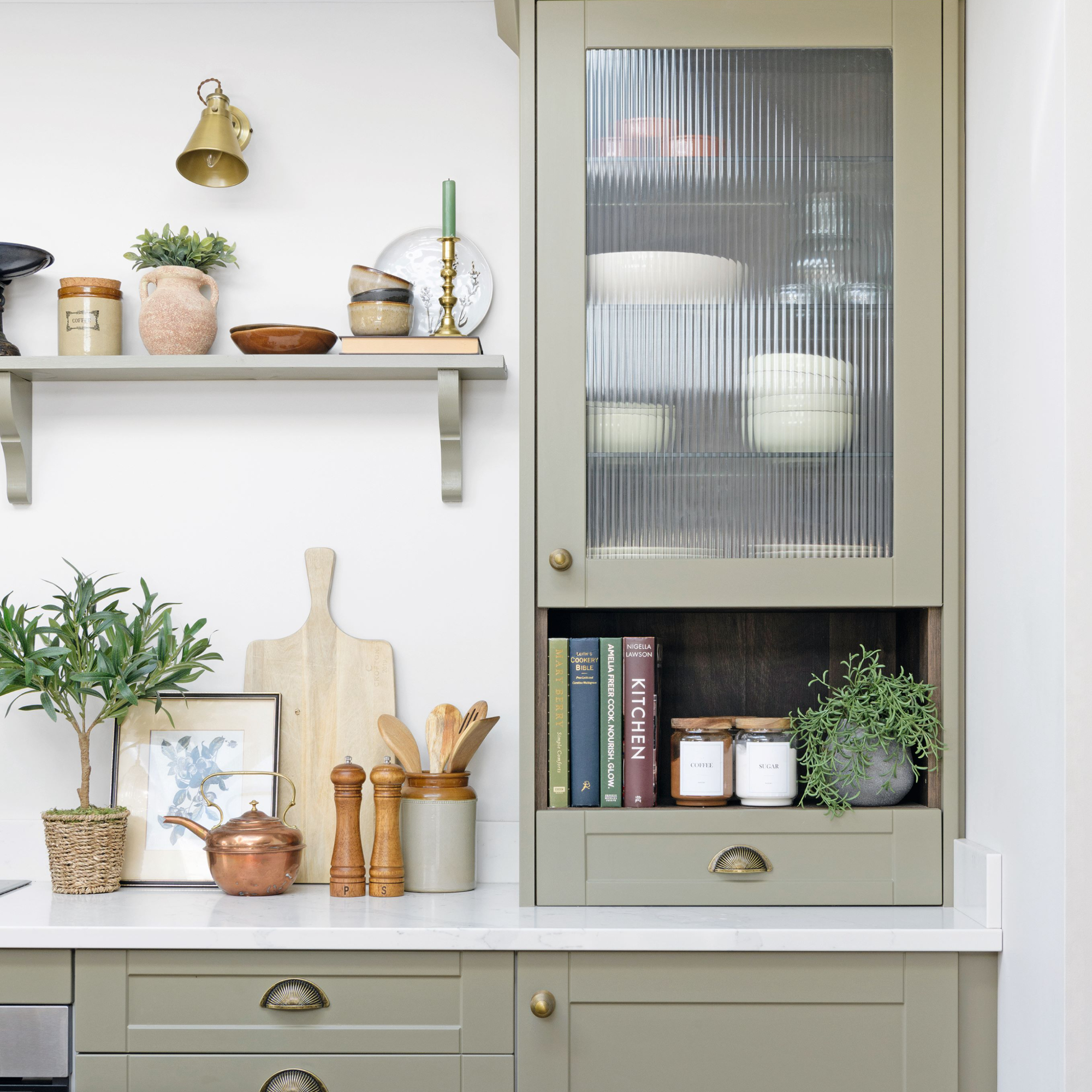How to declutter food storage containers once and for all, according to professional organisers
The secret to taming plastic containers and keeping a clutter-free kitchen


Raise your hand if, like us, you've been personally victimised by a surplus of food storage containers overflowing in your kitchen cabinets. Despite our many efforts to declutter food storage containers, they tend to take on a life of their own.
We love having a stock of food storage containers on hand as much as the next person (especially if they're free from the takeaway). However, if you find yourself terrified that a huge pile of plastic will come tumbling down every single time you open your kitchen cupboards, it's probably time to declutter them.
To help you organise a kitchen cupboard once and for all, we've consulted professional organisers to give us the lowdown on knowing when it's finally time to let go of your food storage containers, as well as how to organise them for a clutter-free kitchen.

How to declutter food storage containers
Following the Christmas and hosting season, it's likely you've accumulated a whole army of new food storage containers at your disposal. If you haven't already had a chance to declutter before the New Year, there's no better time than the present.
'If you still have a lot of unused containers then, chances are you are never going to use them and it is time to declutter,' begins psychotherapist and declutter expert, Helen Sanderson.

Helen is the author of The Secret Life of Clutter, a psychotherapist, interior designer, and one of the UK's most well-respected clutter experts, providing the ultimate holistic decluttering service.
Helen helps people create beautifully organised, clutter-free homes and live more mindful and meaningful lives. She works with her clients holistically, both to uncover what their homes reveal whilst supporting them to let go and move on.
1. Gather and consolidate
Before doing anything, it's best to take all of your food storage containers out of their allocated kitchen storage spot and lay everything out where you can see it.
'Go through each one, checking for wear and tear, such as cracks, stains, or missing lids,' advises Craig Hoareau, APDO member and managing director of A Tidy Mind London.

Craig is a proud, verified member of APDO (Association of Professional Declutterers & Organisers) and the owner of the decluttering service, A Tidy Mind London, which aims to transform people's homes.
He has a calm and supportive approach to working with clients that allows them to deal with the mental clutter while sorting through the physical ones, too.
Ava Wilson, chief editor at Unclutterer also suggests looking out for food storage containers that are warped or have melted spots, as they likely won't seal properly or keep your food airtight anymore. Not to mention, those with persistent stains and odour despite many efforts to clean these food containers should also be tossed.

2. Match lids with corresponding containers
Once you've consolidated and assessed your food storage containers, tossing those that are unsuitable, it's time to get matching.
If you have orphaned containers with more life to give, Helen recommends replacing the original plastic lids with higher-quality glass lids, as they will last longer and are better for your health and the environment.
Alternatively, Craig also suggests repurposing them as a DIY storage idea, such as using them as drawer dividers or recycling them (if your local authority allows for it).

3. Final assessement
Now, you should be left with food storage containers that are suitable, versatile, and complete with their matching counterparts. 'Assess what you have left and think about which sizes and types of containers you use regularly,' advises Craig.
Consider donating excess containers that came in a pack if they're still in good shape but haven't been used. Your trash can easily be someone else's treasure.
How to organise food storage containers
Of course, now comes the fun part: organising your food storage containers. Although a lot of us tend to store containers in our least-reached-for kitchen cupboard, the pros actually suggest keeping them in drawers.
'The best way to store food containers is in a deep drawer that you can open and close easily,' says Helen. She even stores her containers in an even larger container (talk about container-ception).

Furthermore, Craig recommends stacking containers by size and shape to save space, especially as a storage idea for a small kitchen. Additionally, consider using drawer dividers or baskets to keep them neatly arranged, keeping lids separate.
Alternatively, if you've got the space, you can even store food storage containers with the lids on them stacked for ease and convenience to cut the faff of fumbling around for matching pairs every time.
Hopefully, after this, you can finally open your kitchen cupboards or drawers without fear of a pile of unused and mismatched food storage containers making it rain on you.
Get the Ideal Home Newsletter
Sign up to our newsletter for style and decor inspiration, house makeovers, project advice and more.

Jullia was Ideal Home’s Junior Writer from 2022-2024 and the Ideal Home Certified Expert in Training on Vacuums having spent over 60 hours testing different models. She’s always loved all things homes and interiors, graduating with a bachelor’s degree in Architectural Studies from the University of Nottingham where her love for writing blossomed following her internship at ArchDaily. Now focused on home tech and cleaning, Jullia works on writing features and explainers to help people make the most of their home appliance investments, putting the newest launches through their paces. When she isn’t writing, she loves exploring the city, coffee shop hopping, and losing hours to a cosy game or book.
-
 Will a conservatory add value to your home and how can you maximise it?
Will a conservatory add value to your home and how can you maximise it?This is what the pros say
By Amy Reeves
-
 I’ve been looking for a new signature scent for my home and The White Company's new fragrance is the exact summer holiday smell I needed
I’ve been looking for a new signature scent for my home and The White Company's new fragrance is the exact summer holiday smell I neededSantorini smells fresh, summery and sophisticated
By Kezia Reynolds
-
 How to remove algae from garden walls in five steps – and the cleaning product experts rave about for tackling it fast
How to remove algae from garden walls in five steps – and the cleaning product experts rave about for tackling it fastExperts share their top tips for getting garden walls algae-free
By Katie Sims